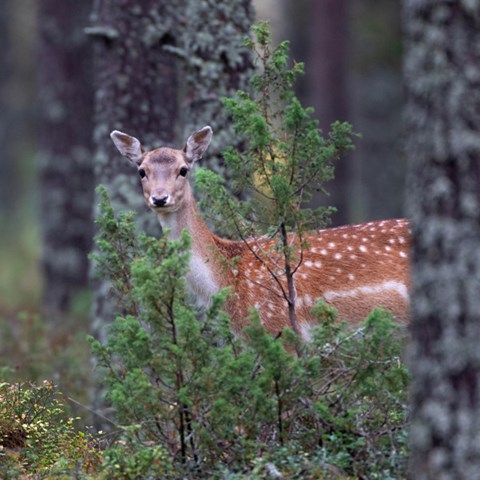Ungulates provide humans with numerous vital ecosystem services, such as creating habitats for various plants and animals, contributing to recreation, and supporting wildlife tourism. However, ungulates also cause damage to crops and economically important forests. As the numbers of various ungulate species increase, the risk of conflicts also rises.
"There is a need for management strategies with dual objectives: both reducing damage and considering the positive aspects of ungulates," says Anna Widén, a PhD student at the Swedish University of Agricultural Sciences.
A successful strategy could involve looking beyond land use and ownership boundaries, creating a variation of ungulate densities in the landscape, taking into account ungulate behavior. Anna Widén's thesis explores how food, avoidance of fear, and temperature influence how ungulates utilize landscapes with agriculture and forestry, as well as the human role in shaping ungulate behavior.
The forest near attractive crops was grazed more
By conducting landscape experiments in Sweden, where both food and the level of danger were manipulated, Anna Widén demonstrated that both factors influenced how ungulates utilized agricultural fields and forest stands. The results show that the crops cultivated in agricultural fields significantly impact the damage caused by wildlife, not only in the fields but also in nearby forests.
"The forest near attractive and nutrient-rich crops is grazed more than the forest around less attractive crops," says Anna Widén.
To investigate how wildlife avoidance of fear affects crop damage, an experiment was conducted where various types of sounds were broadcasted on agricultural fields. The results show that fear can be manipulated through playbacks, and damage significantly decreased in areas where playbacks had been broadcasted, with sounds of humans being the most frightening playback type.
By analyzing GPS data from moose, roe deer, and red deer, Anna demonstrated that all these species adapted their habitat selection as temperatures increased by choosing areas that provided more shade.
In summary, the thesis shows that food, avoidance of fear, and temperature all influence how ungulates use the landscape and where they cause damage. It is crucial to consider these factors in future management to design more effective methods aimed at reducing conflicts.
"We must not forget ourselves in this equation; it is our actions that affect ungulate behavior and landscape utilization," says Anna Widén.

